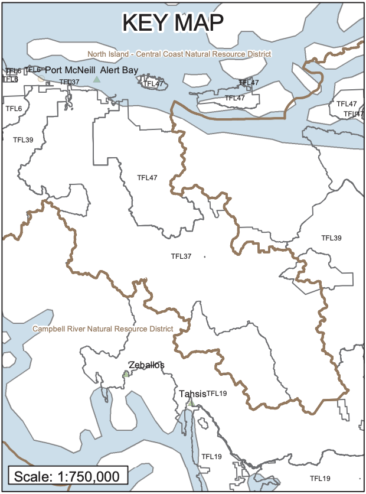Remember last fall when the province came up with an old-growth plan? And they gave First Nations 30 days to decide if they were on board?
The Hu-ay-aht First Nation was the first to respond. They postponed logging old-growth in all but 4% of their territory.
But because they were only given 30 days, they also said their plans could shift a little.
The coastal Indigenous group Na̲nwaḵolas Council is now responding to the same proposal from the government. They took a bit more time to sort things out. Because let’s be honest, 30 days is not enough time.
Dallas Smith is the president of the Na̲nwaḵolas Council. On January 19, he said the deferral “will prioritize some of the rarest and oldest forests.”

Credit: Ministry of Forests, Lands, Natural Resource Operations & Rural Development
The Na̲nwaḵolas Council is made up of the Mamalilikulla, Tlowitsis, Da’naxda’xw Awaetlala, Wei Wai Kum, and K’ómoks First Nations. Their Aweenak’ola, or “the lands we are on,” is home to ancient forests on northern Vancouver Island and parts of the coastal mainland.
A lot of that land is in the region covered by Tree Forest License 39-2, which cuts west across central Vancouver Island from Port McNeil to just north of Campbell River. TheTree Forest License grants Western Forest Products virtually exclusive rights to log in this area.
The new agreement protects all of the ancient and remnant trees in 1,068 hectares identified by the province’s Old Growth Technical Advisory Panel (TAP). That’s on top of another 1,500 hectares the Na̲nwaḵolas Council protects through other agreements signed in 2020.
Smith explained that it’s hard work trying to balance the needs of the forest with the cultural and financial needs of the Council’s nations.
“We have done a lot of work to put us in a position to actively engage Western and others around our important cultural and ecological values while balancing the socioeconomic needs of our communities and the surrounding region.”
So far, about two-thirds of BC’s 204 Indigenous communities have responded to the government’s old-growth proposal.









